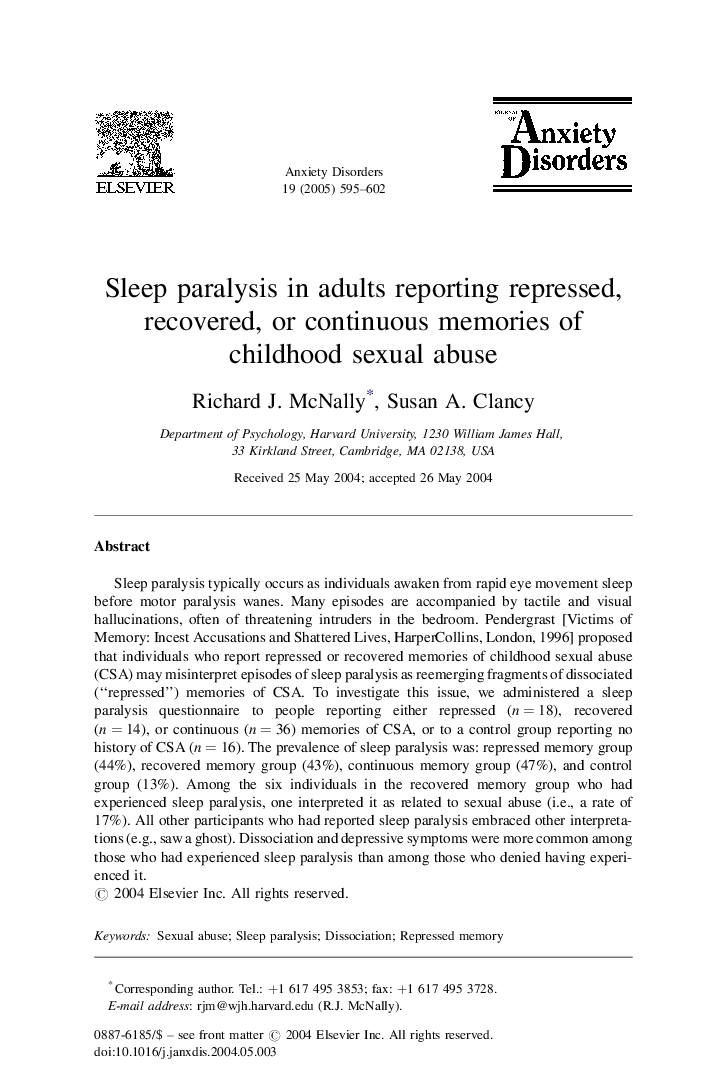| Article ID | Journal | Published Year | Pages | File Type |
|---|---|---|---|---|
| 10447879 | Journal of Anxiety Disorders | 2005 | 8 Pages |
Abstract
Sleep paralysis typically occurs as individuals awaken from rapid eye movement sleep before motor paralysis wanes. Many episodes are accompanied by tactile and visual hallucinations, often of threatening intruders in the bedroom. Pendergrast [Victims of Memory: Incest Accusations and Shattered Lives, HarperCollins, London, 1996] proposed that individuals who report repressed or recovered memories of childhood sexual abuse (CSA) may misinterpret episodes of sleep paralysis as reemerging fragments of dissociated (“repressed”) memories of CSA. To investigate this issue, we administered a sleep paralysis questionnaire to people reporting either repressed (n = 18), recovered (n = 14), or continuous (n = 36) memories of CSA, or to a control group reporting no history of CSA (n = 16). The prevalence of sleep paralysis was: repressed memory group (44%), recovered memory group (43%), continuous memory group (47%), and control group (13%). Among the six individuals in the recovered memory group who had experienced sleep paralysis, one interpreted it as related to sexual abuse (i.e., a rate of 17%). All other participants who had reported sleep paralysis embraced other interpretations (e.g., saw a ghost). Dissociation and depressive symptoms were more common among those who had experienced sleep paralysis than among those who denied having experienced it.
Related Topics
Health Sciences
Medicine and Dentistry
Psychiatry and Mental Health
Authors
Richard J. McNally, Susan A. Clancy,
